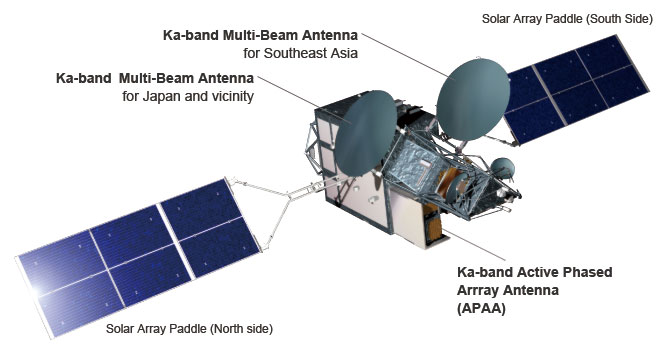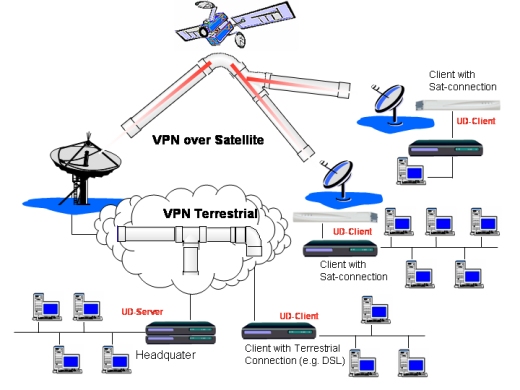Satellite Communication System |
|||
n 1945 Arthur C. Clarke proposed that a man-made Earth SATELLITE could be used for communication by radio microwaves between distant locations on Earth. The satellite would be positioned in space at an altitude of about 35 790 km so that its speed of revolution around the Earth would be the same as the speed of the Earth's rotation. This synchronous satellite would always appear in the same place in the sky. It would be in geostationary orbit. Characteristics The communication capacity of a satellite is determined by the number of transponder channels and the volume of communication that can be transmitted on each channel. Although this varies from one type of satellite to another, the most commonly used satellite in 1995 had 24 transponders. Each can carry a colour TV signal (or 6 digitally compressed TV signals) or at least 1200 telephone voice signals in one direction. Each new generation of satellites tends to have increased communication capability. The transmitting and
receiving stations on Earth (earth stations) range in size from
sophisticated, expensive stations that send and receive all types of
communication signals to relatively simple and less costly stations
(dish-shaped TV antennas) used only to receive television signals. The
size and cost of Earth stations depend upon the power built into the
satellite, as well as the frequencies used. The stronger the signal from
the satellite, the smaller and less costly the receiving station.
Direct Broadcast Satellites are designed specifically to minimize size
and cost. Resources :-  |
Satellite & Wireless Communications Gallery    |
||